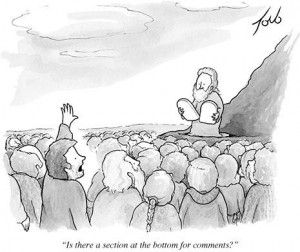 Lack of alignment around goals, or the deeper challenges of disagreements about priorities, the desired future, beliefs about what is possible, let alone worthwhile, sometimes fueled by egoic, dysfunctional, win-lose thinking, all limit success.
Lack of alignment around goals, or the deeper challenges of disagreements about priorities, the desired future, beliefs about what is possible, let alone worthwhile, sometimes fueled by egoic, dysfunctional, win-lose thinking, all limit success.
When stakes are high, this lack of alignment can create quite a mess. Though recovery from such setbacks isn’t usually a problem, if there’s a preventable pattern, or perceptions that the misalignment is between management and workforce, it can be demoralizing and distracting … a quiet productivity killer.
From Mess to Success
Key questions:
1. How can differences be turned into competitive advantage?
Significant differences are, by definition, the key to synergy (1+1=3), innovation and change. If each collaboration partner brought the same information, style, values and priorities, awareness and so on to the table, one or more of them would be redundant. Key is to harness these differences and use them toward agreed-upon challenges, critical success factors, strategic innovation and important goals. We often get caught up in managing differences that don’t matter or deserve the attention they get.
2. Do we use collaboration at the right times?
Although we sometimes invest face time or too much of our agendas to things that don’t deserve it, we also can’t just ignore fundamental differences, and push and drag each other around in resistance. Some cultures do this all day long, but it is exhausting and ultimately not productive. Effective collaboration seeks solutions or helps participants put differences aside to focus on the real prize — the innovation that can result when teams are aligned in their purpose.
3. How can individuals work autonomously, with their own authority and sense of power, without simply withdrawing from friction in relationships?
Many of us do not have a positive association with of resolving differences or have a fear of confrontation. Often, just as common ground is beginning to emerge, collaboration partners give up on a project or step back from a key relationship just because there are differences or apparent conflicts starting to crop up. This is about confidence, standing one’s ground, but being flexible enough to stay in the conversation until solutions can be put in operation.
Alignment happens, but just as often, value is lost and worthwhile projects or initiatives languish. What are your workplace culture’s standards and does everyone operate accordingly? If not, what steps might you take?
4. How can incentive systems, innovation platforms and other change initiatives reward skillful handling of differences?
Incentive systems that provide external rewards are sometimes seen as manipulation; intrinsic motivation to perform and get results in diverse teams can be a powerful drive of change — so long as functional areas are aligned on goals and required to row in the same direction. Allowing for diverse points of view can be stimulating, but tapping into the potential value in that diversity takes practice and skill. Modeling this behavior is more effective than espousing it.
5. What enables leaders and key contributors to harness differences toward lasting value?
The assumption that people are “walking bundles of strengths” and a desire to find the useful parts of what others think and know, not just differences that don’t happen to fit with what’s familiar or seeming to be the “right answer” based on first impressions. In other words, patience and curiosity without losing sight of bigger picture goals. This more inclusive style, within clear structure about the rules of engagement and incentive systems, plus skillful communication, will yield positive results. If not, contact us to help diagnose what’s getting in the way.
Related article: Seven Attitudes to Dissolve Conflicts
Related topics: collaboration | handling differences | agreements | rapport | resistance


